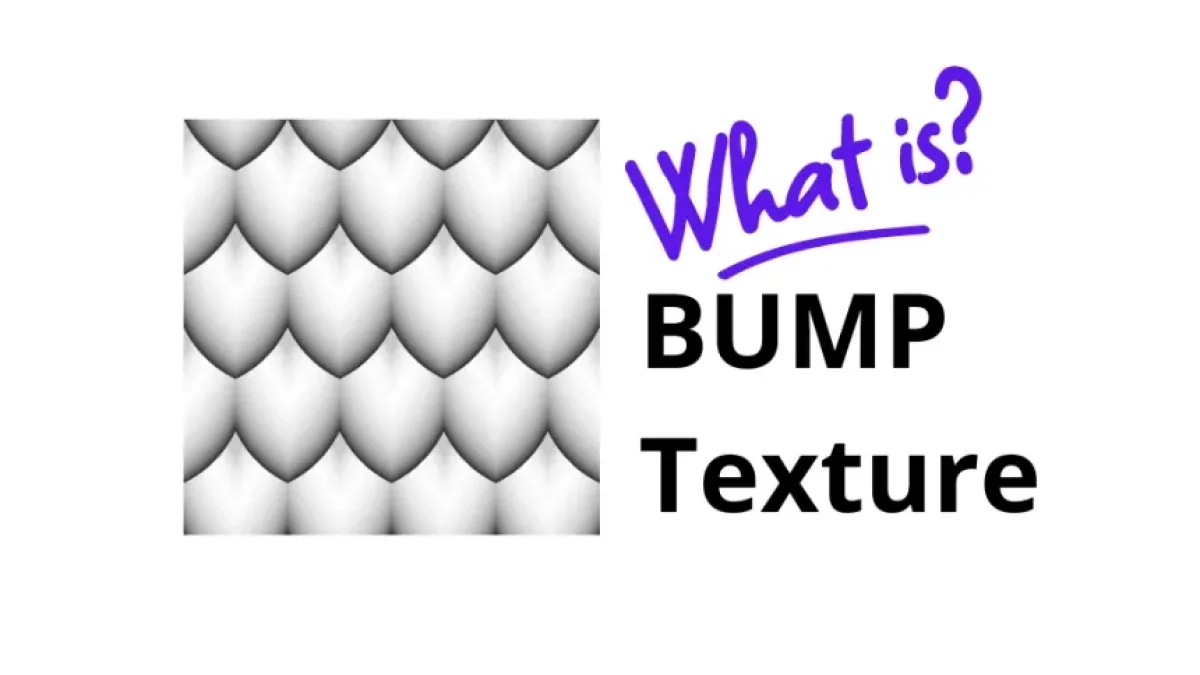What is a Bump Map Texture in 3D?


In the world of graphic design and 3D animation, creating realistic models is one of the most important aspects. Among the techniques used to achieve this goal, textures hold a prominent place. One of the most relevant types of textures is the bump map. In this article, we will explore what a bump map is, how it works, and its usefulness in creating three-dimensional graphics.
What is a Bump Map Texture?
A bump map is a texturing technique used in 3D graphics that simulates the appearance of detail on the surface of a model without altering its actual structure. Instead of changing the geometry of the model, the bump map modifies the way light interacts with the surface, creating the illusion of relief and depth.
Features of the Bump Map
- Does not alter geometry: A bump map does not modify the mesh of the 3D model, making it a more cost-effective option in terms of processing.
- Uses grayscale: Bump maps are typically grayscale images, where lighter areas represent raised regions, and darker areas represent recessed areas.
- Compatibility: They are commonly used in rendering engines that support texture maps, making them versatile across different platforms and design software.
How Does a Bump Map Work?
To understand how a bump map works, it is essential to know the concept of lighting in 3D. The bump map affects the lighting calculation by simulating how light hits the surface of a model. This is achieved by modifying the surface normals, creating variations in lighting and shadows. Below, we break down the process.
Bump Map Application Process
- Creating the Bump Map: A grayscale image is generated based on the desired texture.
- Applying to the Model: The bump map is assigned to the 3D model through graphic design software.
- Lighting Calculation: The rendering engine uses the bump map to alter the direction of the normals based on the pixel values in the texture, creating the illusion of relief.
Visual Example
An excellent example of bump mapping can be seen on brick surfaces. Although the 3D model might be completely flat, applying a bump map with a brick pattern will create the illusion that the surface has texture and depth.
Advantages of Using Bump Maps
Efficiency in Projection
A bump map is significantly more resource-efficient than modeling every detail in 3D. This is especially important when working in real-time environments, such as video games, where performance is crucial.
Enhanced Realism
By adding subtle surface details, bump maps help designers create more attractive and realistic objects without a costly increase in model complexity.
Flexibility
Bump maps are easy to create and can be quickly adjusted. A simple edit to the bump map image can radically change the final appearance of the model.
Limitations of Bump Maps
Despite their advantages, bump maps have some limitations that are important to consider:
Limited Detail
Bump maps cannot simulate all types of surface features, such as geometry intersections or more complex variations in relief. Other techniques, such as displacement mapping, are necessary for those cases.
Dependence on Viewing Angle
The visual effect of the bump map can vary based on the angle from which the model is viewed, which can lead to undesirable effects in certain situations.
When to Use Bump Maps?
Bump maps are suitable for a wide variety of 3D applications, but they stand out in the following situations:
Video Games
In video game development, where efficiency is key, bump maps allow surfaces to appear more detailed without increasing model complexity.
Architectural Visualizations
In architectural visualization, bump maps can enhance the appearance of materials, such as the texture of bricks or stone, without requiring extremely detailed models.
Animations
When working on animations where 3D models need to move or change shape, bump maps offer an efficient way to maintain realism without complicating the design.
Conclusion
In summary, a bump map texture is an essential tool in the arsenal of any 3D artist or designer. Its ability to create the illusion of texture and depth without significantly impacting system performance makes it an attractive option for various applications. Although it has its limitations, its well-applied use can considerably enhance the visual quality of 3D models. By understanding how it works and when to use it, designers can make the most of this technique in their projects.
Article information
Key tips
Take your time to understand each concept before moving on to the next one.
Practice the examples in your own development environment for better understanding.
Don't hesitate to review the additional resources mentioned in the article.



















